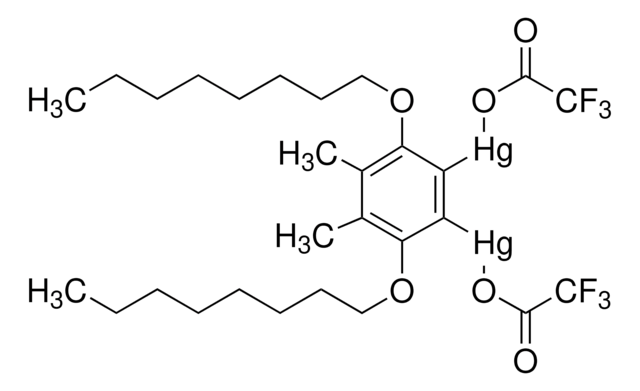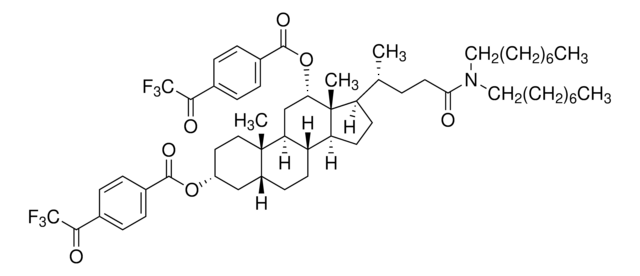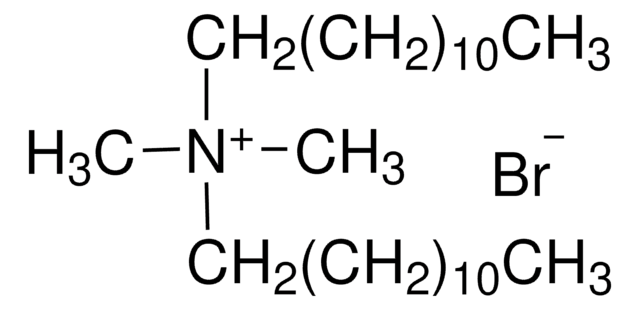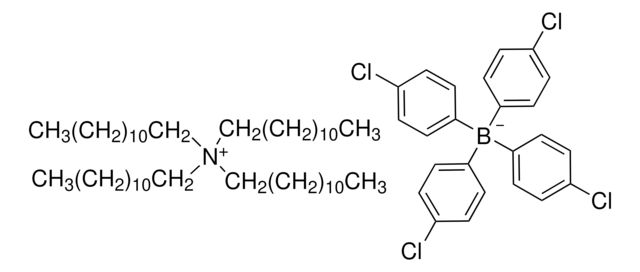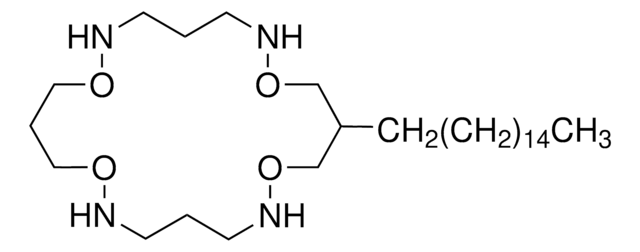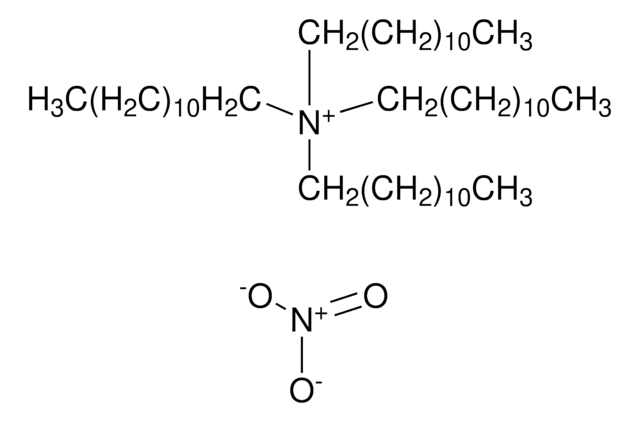367729
Tridodecylmethylammonium chloride
98%
Synonim(y):
Methyltridodecylammonium chloride
About This Item
Polecane produkty
Próba
98%
mp
110-112 °C (lit.)
ciąg SMILES
[Cl-].CCCCCCCCCCCC[N+](C)(CCCCCCCCCCCC)CCCCCCCCCCCC
InChI
1S/C37H78N.ClH/c1-5-8-11-14-17-20-23-26-29-32-35-38(4,36-33-30-27-24-21-18-15-12-9-6-2)37-34-31-28-25-22-19-16-13-10-7-3;/h5-37H2,1-4H3;1H/q+1;/p-1
Klucz InChI
SBHRWOBHKASWGU-UHFFFAOYSA-M
Szukasz podobnych produktów? Odwiedź Przewodnik dotyczący porównywania produktów
Zastosowanie
- Catalyst in the transesterification of methyl esters with glycidol to synthesize glycidyl esters.
- Bulky lipophilic cationic additive for polyaniline membranes.
Hasło ostrzegawcze
Warning
Zwroty wskazujące rodzaj zagrożenia
Zwroty wskazujące środki ostrożności
Klasyfikacja zagrożeń
Eye Irrit. 2 - Skin Irrit. 2 - STOT SE 3
Organy docelowe
Respiratory system
Kod klasy składowania
11 - Combustible Solids
Klasa zagrożenia wodnego (WGK)
WGK 3
Temperatura zapłonu (°F)
Not applicable
Temperatura zapłonu (°C)
Not applicable
Środki ochrony indywidualnej
dust mask type N95 (US), Eyeshields, Gloves
Certyfikaty analizy (CoA)
Poszukaj Certyfikaty analizy (CoA), wpisując numer partii/serii produktów. Numery serii i partii można znaleźć na etykiecie produktu po słowach „seria” lub „partia”.
Masz już ten produkt?
Dokumenty związane z niedawno zakupionymi produktami zostały zamieszczone w Bibliotece dokumentów.
Klienci oglądali również te produkty
Nasz zespół naukowców ma doświadczenie we wszystkich obszarach badań, w tym w naukach przyrodniczych, materiałoznawstwie, syntezie chemicznej, chromatografii, analityce i wielu innych dziedzinach.
Skontaktuj się z zespołem ds. pomocy technicznej





